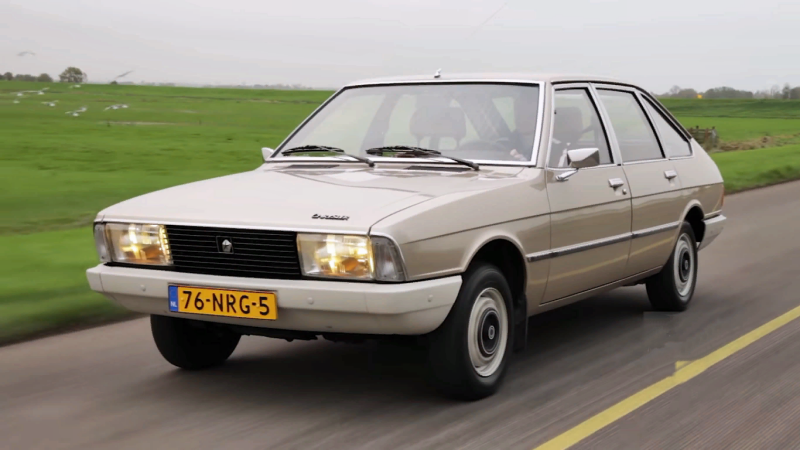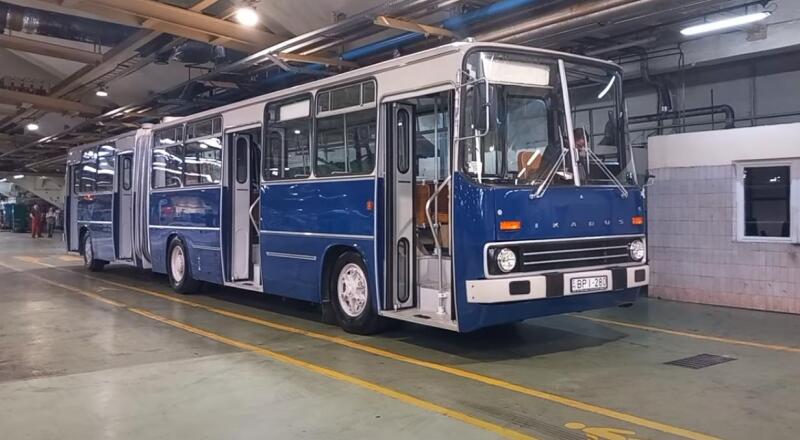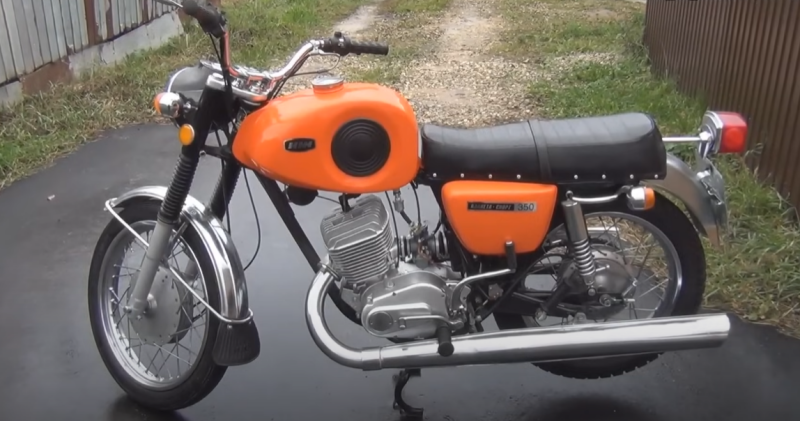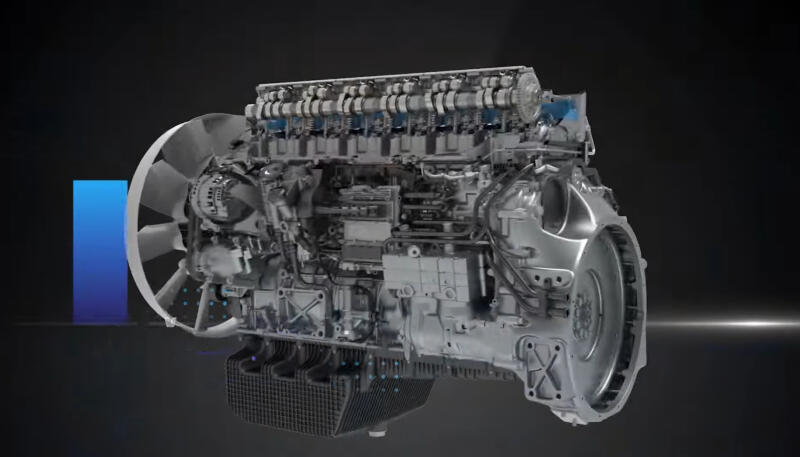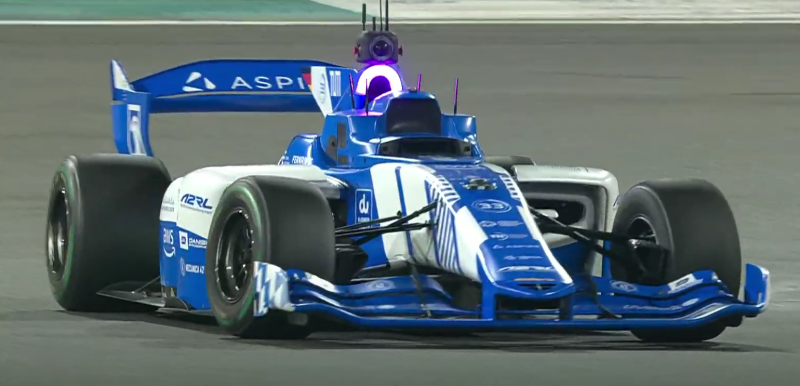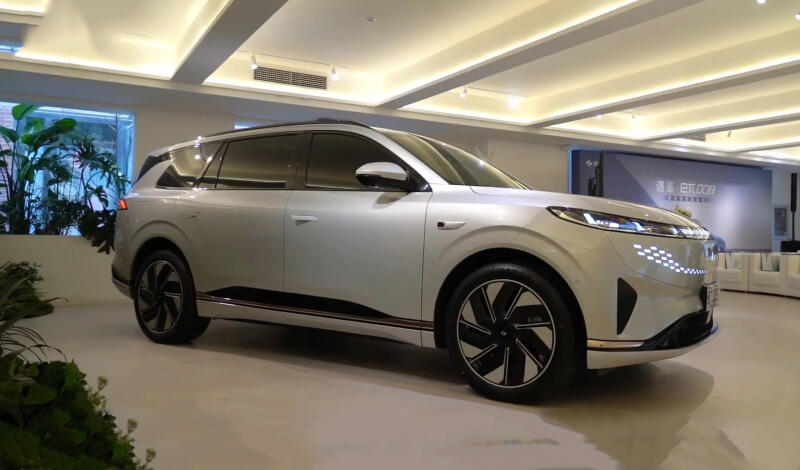The American automaker gained control in 1963, and subsequently took over British Rootes. Due to the group's strategy, new Simca car models were sold in some countries under different names.
 Simca 1307/1308 is a car for every day. Photo: youtube.com
Simca 1307/1308 is a car for every day. Photo: youtube.comFor example, in the UK or New Zealand they were available as the Chrysler Alpine, but that was only at the beginning. Although the models performed very well, in August 1978 the entire Chrysler Europe division came under the banner of the French concern PSA.
The immediate ban on certain brands, including the Chrysler name, led to the restoration of Talbot, the rights to which were owned by PSA. This move was prompted by the ridiculous results of a study showing that 80% of the French consider Talbot to be their brand, and the same number of English people consider Talbot to be theirs. But all this happened a little later, but the start seemed more than successful.
Simca 1307/1308 was officially presented to the press after three years of development, in July 1975. Its production began in Poissy in September, and a month later the car was seen by the Parisian public. Those present praised the very modern five-door hatchback with large integrated bumpers and predominantly front-wheel drive.
The Simca 1307/1308 was one of the first mid-size cars in Europe with a front engine and drive. It was produced partly in France, partly in England. Its designer was Roy Ax, who came to Chrysler Europe through the takeover of the British Rootes Group in 1966. It's time, perhaps, to pay attention to the technical component of the car that received such high marks.
Advanced design from Simca
The four-door body style, with a streamlined rear end and a hinged trunk lid, was characterized by simple, timeless style and high functionality. The car's design is focused on maximum interior space and safety. The applied axle design proves that most of the wheel suspension elements are based on the Simca 1100 model.
 The back of the Simca 1307/1308 looks stylish. Photo: youtube.com
The back of the Simca 1307/1308 looks stylish. Photo: youtube.comThe front wheels rested on trapezoidal suspensions and were sprung by long, longitudinally located torsion bars. The rear ones are on triangular trailing arms with a common rotary axis. Differences from the 1100 series resulted in several elements:
✅ torsion bars were replaced by coil springs
✅ there were torsion stabilizers on both axles
✅ hydraulic shock absorbers front and rear
Rack and pinion steering with a three-element safety strut and a flexible part that dampens the transmission of vibrations to the steering wheel; in later versions it could be optionally supplemented with a hydraulic booster. Dual-circuit hydraulic brakes with standard Mastervac vacuum and rear axle drag limiter acted on: front discs with a diameter of 240 mm and rear drums (229 mm).
The entire front section of the Simca 1307/1308 is largely one separate structural unit, which also serves as a crumple zone. It includes several vehicle components:
✅ front wall
✅ wheel suspension elements
✅ wheel arches
✅ side guides
During a frontal impact, the energy was distributed not only to the load-bearing parts, but also to the wings or double hood. And the body frame should not have been damaged in minor collisions. This idea served to protect the user, among other things, from the serious costs of fully restoring the car after an accident.
Peculiar design and not very powerful engines
The rather angular (but not gaudy, but pleasant) shapes of the 4,25-meter-long cars were the work of stylist Keith Cockell. It was commanded by the previously mentioned Roy Axe, both from the British center at Whitley. However, the technical development of the project took place in Carrieres (France), near Poissy. And for the first time in this country they focused on the help of computer programs. These large D-segment family cars replaced the 1301/1501 series.
 The Simca's interior is coolly decorated. Photo: youtube.com
The Simca's interior is coolly decorated. Photo: youtube.comInside they offered adequate space, with only very tall rear seat passengers having limited headroom. The surroundings were easily visible from the cabin, which is a very nice feature. But the power units installed on them remained the same small-displacement:
✅ transverse arrangement
✅ in-line four-cylinder OHV gasoline engines
✅ working volume - 1294 (1442) cubic meters. cm
✅ power – 68/81,5/85,6 l. With
The weakest version, the 1307 GLS, had 50 kW, the two-carburetor S had 60 kW. The 1308 GT used the most powerful engine: 1,44 l/63 kW. All units under the Poissy brand with cast iron blocks had electronic transistor ignition. Transmissions were originally only four-speed direct shift.
The chassis had a wheelbase of 2604 mm and independent suspension. Comfort was provided by four telescopic shock absorbers and two anti-roll bars to improve ride quality. The car had thirteen-inch wheels with 155 mm wide radial tires. The tank held 60 liters of gasoline, consumption on the road ranged from 8 to 12 liters. Here are the physical parameters of the hatchback:
✅ length - 4,25 m
✅ weight - approx. 1050 kg
✅ trunk volume – 306 (with the rear seat folded – 1250) l
True, when measuring up to the ceiling, the manufacturer gave much more optimistic figures: 473 and 1400 liters, respectively. The GT boasted a radio, tachometer, electric front windows, and tinted windshields and wipers. A heated rear window was available on all versions, as well as self-retracting front seat belts and halogen headlights.
 Car engine Simca 1307/1308. Photo: youtube.com
Car engine Simca 1307/1308. Photo: youtube.comBut buyers had to order additional comfort elements such as front seat headrests separately. The Chrysler Alpine GL, S and GLS were sold in Britain. Moreover, the latter also has electric windows and central locking.
Fame was short lived
It's no surprise that the 1307/1308 series won the European Car of the Year 1975/1976 title. Among other things, it impressed journalists with its comfort, use of interior space and driving performance. And not only them, but also their future clients. The interest in the new product was so great that production in Poissy grew in mathematical progression:
✅ 400 units per day (September 1975)
✅ 800 – in December 1975
✅ 1050 – in May 1976
By the end of the year, 1100 cars were leaving the plant daily, and at the beginning of the next - 1200. It was a triumph. In 1976, a total of 218 cars were assembled, a year later another 000 (including 40 in the form of disassembled kits). Never before has a manufacturer achieved such figures. But the joy was too short.
 Simca 1307/1308 is somewhat similar to Moskvich-2141. Photo: youtube.com
Simca 1307/1308 is somewhat similar to Moskvich-2141. Photo: youtube.comChrysler encountered financial problems, ceased all operations in Europe and in the summer of 1978 sold Simca to PSA for a symbolic dollar. They simply closed the brand in the early 80s, reviving the historical Talbot. The redesigned 1980 models, when the rights to the Chrysler logo expired, were the only ones to bear both names. After this, the successful brand was completely canceled. Peugeot sold cars in its own sales network, and three quarters of Simca dealers were simply fired.
The technology of five-door hatchbacks was also used by Soviet designers when developing the Moskvich-Aleko. But for domestic cars, the technical base was already based on Audi, with a longitudinal engine. In the end, so many changes were made that PSA did not claim any licensing fees.
